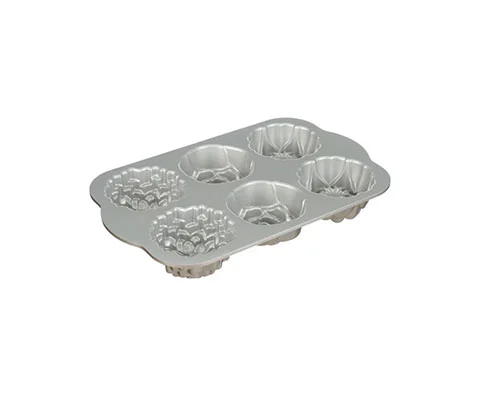When it comes to versatile cookware, an aluminum soup pot takes the lead. Its multifunctional application and cooking prowess make it an essential tool in any kitchen. From simmering soups to creating mouthwatering stews, the aluminum soup pot offers a wide range of culinary possibilities. In this article, we'll explore the various applications of an aluminum soup pot and share some valuable cooking skills to help you unlock its full potential.
An aluminum soup pot is not just limited to making soups. It's a versatile workhorse that can handle an array of cooking tasks. Here are some exciting applications for your aluminum soup pot:
Soups and Stews: Of course, the soup pot excels at creating delicious, hearty soups and stews. Whether it's a classic chicken noodle soup or a comforting beef stew, the even heat distribution of the aluminum pot ensures perfectly cooked ingredients and rich flavors.
Stocks and Broths: Need a flavorful base for your recipes? The large capacity of the soup pot makes it ideal for simmering bones, vegetables, and herbs to create homemade stocks and broths. The result is a savory foundation that enhances the taste of your dishes.
Pasta and Boiling: The generous size of the pot allows you to cook large batches of pasta or boil vegetables with ease. The rapid heat conductivity of aluminum ensures quick boiling times and even cooking throughout, guaranteeing perfectly al dente pasta or crisp-tender veggies.
One-Pot Meals: Embrace the convenience of one-pot cooking by preparing complete meals in your aluminum soup pot. From risottos to hearty casseroles, you can sauté, simmer, and finish off your dish in a single pot, minimizing cleanup and maximizing flavor.
To truly harness the potential of your aluminum soup pot, here are some essential cooking skills and tips to keep in mind:
Searing and Browning: When starting a recipe, don't overlook the importance of searing and browning ingredients. Preheat your soup pot, add a small amount of oil or butter, and sear meat or sauté vegetables until they develop a golden brown color. This step enhances the depth of flavor in your dishes.
Layering Flavors: Building layers of flavors is the key to creating memorable dishes. After searing, deglaze the pot with wine, broth, or stock to scrape up the flavorful browned bits from the bottom. Add aromatic ingredients like onions, garlic, and herbs to infuse your dish with complexity and depth.
Slow and Low: For certain recipes, such as braises and stews, low and slow is the way to go. Allow the ingredients to simmer gently over low heat, allowing flavors to meld and tenderize tougher cuts of meat. This slow cooking process results in tender, melt-in-your-mouth dishes.
Adjusting Heat Levels: Aluminum soup pots are excellent conductors of heat, so it's important to adjust the heat levels accordingly. Reduce the heat to low or medium-low once the desired temperature is reached to maintain a steady simmer without boiling over or scorching.
Stirring and Tasting: Regularly stir your dish during the cooking process to ensure even heat distribution and prevent sticking. Don't forget to taste along the way, adjusting seasonings and flavors to suit your preferences.
 English
English 中文
中文 日本語
日本語 한국어
한국어 français
français Deutsch
Deutsch italiano
italiano Suomi
Suomi dansk
dansk Svenska
Svenska





